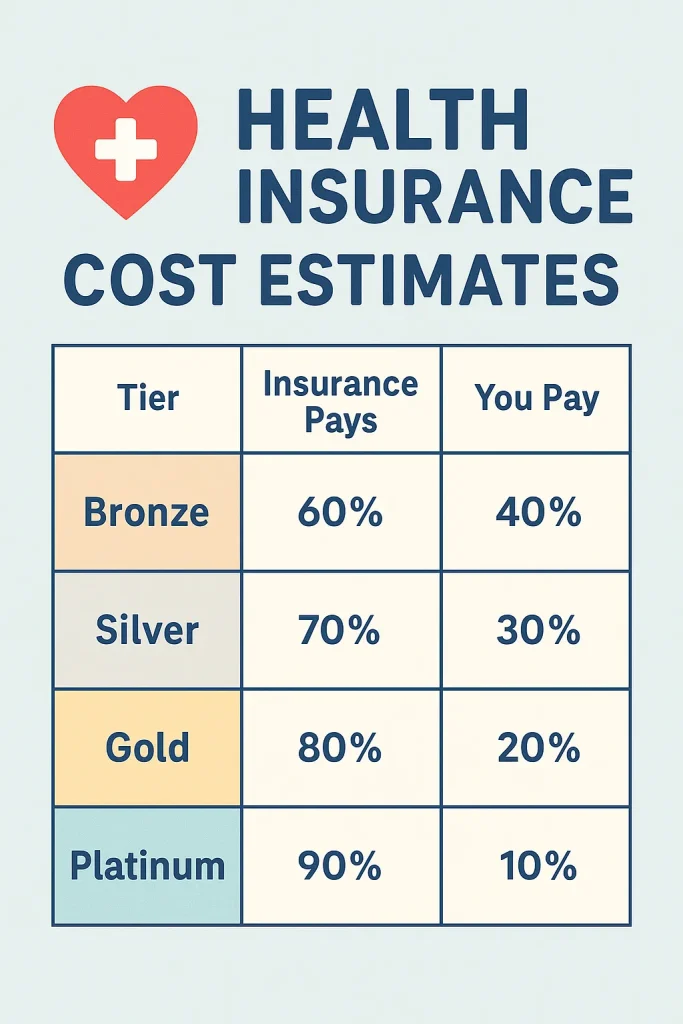ACA and The Marketplace
Employer-based health insurance isn’t always an option, and coverage can feel out of reach during life transitions and times of uncertainty. The Affordable Care Act (ACA) and the Health Insurance Marketplace were founded to ensure individuals and families can access affordable health insurance from trusted providers without the confusion of navigating private insurance. Financial support, premium tax credits, and reduced out-of-pocket costs through the ACA all ensure health plans are a benefit, not a burden.
What Is the Affordable Care Act (ACA)?
Leading benefits of ACA health coverage:
- Pre-existing condition coverage
- Free preventive care, such as annual checkups, screenings, and vaccinations
- Limits on out-of-pocket costs
- No annual or lifetime cap on patient coverage
- Access to premium tax credits for qualifying individuals and families
The ACA also created a consolidated online system—the Health Insurance Marketplace —where individuals and families can shop for coverage and apply for financial aid based on their income(s).
What Is the Health Insurance Marketplace?
The Marketplace (also known as Healthcare.gov or a state exchange) offers insurance options for individuals who lack access to employer-sponsored coverage and are ineligible for Medicaid or Medicare.
Marketplace health plans typically cover:
- Doctor visits and hospital care
- Generic and brand name prescription medications
- Mental health services
- Maternity and newborn care
- Emergency and urgent care
- Preventive care and wellness services
Health plans are grouped into categories (informally called “metal levels”): Bronze, Silver, Gold, and Platinum. Designations are given based on the extent of coverage and the amount of cost-sharing between the insurance carrier and the enrolling individual.
A fifth catastrophic Marketplace health plan is available on a limited basis to people under 30 or those who qualify for a hardship or income-based exemption.

Reference: 1. Centers for Medicare and Medicaid Services News Room. Historic 21.3 Million People Choose ACA Marketplace Coverage. Published January 24, 2024.
ACA Open Enrollment for 2025
Open Enrollment is the yearly period individuals and families can apply for or renew Marketplace health plans or secure a different plan through the Marketplace if their health needs or financial situation has changed. Dates typically run from November 1st through January 15th, though these may vary with state exchanges.
For those enrolling by December 15th, coverage begins on January 1st; those enrolling between December 16th and January 15th will pay their first premium and activate coverage on February 1st.
Open Enrollment 2025–2026
Apply for or renew Marketplace health plans. Federal dates: Nov 1 – Jan 15.
Opens
Nov 1, 2025
Season begins
Enroll by
Dec 15, 2025
Coverage starts Jan 1, 2026
Last day
Jan 15, 2026
Coverage starts Feb 1, 2026
Note: Dates reflect federal Marketplace; state exchanges may differ.
Marketplace Special Enrollment Period (SEP)
The Special Enrollment Period is designed for individuals and families who experience certain significant life changes, called qualifying life events.
Examples of qualifying life events include:
- Loss of an employer-sponsored health plan
- Birth, adoption, or death in the household
- Divorce or legal separation
- Moving to a new ZIP code or state
- Gaining legal immigration status
- Being released from jail or prison
A Special Enrollment Period typically lasts 60 days from the date of the qualifying event.
Understanding the Federal Poverty Level (FPL)
Marketplace eligibility and savings are based on household income and size and measured against the Federal Poverty Level (FPL), a metric defined by the U.S. Department of Health and Human Services. The FPL lists the minimum annual income a household needs to afford basic living expenses. Individuals and families whose income(s) fall between 100% and 400% of the FPL may qualify for assistance paying for insurance.
To determine qualifying income, the Marketplace calculates a household’s Modified Adjusted Gross Income (MAGI). Adjusted gross income is what appears on federal tax returns once deductions like student loan interest and retirement contributions are applied and includes wages, self-employment income, Social Security income, and retirement distributions.
Premium Tax Credits and Financial Assistance
Qualifying individuals and families can receive a premium tax credit to lower the monthly health insurance premiums of plans purchased through the Marketplace. In most cases, the credit is applied immediately and may drastically reduce the amount owed each month.
Some individuals may also qualify for Marketplace cost-sharing reductions (CSRs), also called “extra savings,” which lower the cost of deductibles, co-pays, and other out-of-pocket expenses for Silver category plans. Typically, income must fall between 100% and 250% of the FPL.
FAQs
What are the requirements for ACA financial assistance?
Financial help is based on household MAGI and size. Most people qualify for some type of savings. If an individual’s income falls within a certain range, they may be eligible for premium tax credits to lower monthly premiums and cost-sharing reductions to reduce out-of-pocket expenses. Healthcare.gov offers a comprehensive tool to estimate expected yearly income and what savings individuals may qualify for.
What happens if Open Enrollment is missed?
Generally, individuals must go a full calendar year without Marketplace health coverage once the Open Enrollment window closes. This gap in coverage leads to delayed access to care due to high out-of-pocket costs and limited protection from emergencies, and this can result in significant medical debt.
Previously, uninsured individuals were fined for not carrying insurance coverage, though the federal penalty ended in 2019. However, California, Massachusetts, New Jersey, Rhode Island, and the District of Columbia may charge a fee, as residents are required to carry health insurance.
Is Marketplace coverage available for pre-existing conditions?
Yes. The Affordable Care Act ensures insurance carriers cannot deny coverage or charge more because of a pre-existing condition, such as diabetes, cancer, chronic kidney disease, or asthma.
Can individuals keep their current doctor(s) if they enroll through the Marketplace?
This is dependent on the plan an individual chooses. Each insurance carrier has a network of participating healthcare providers and hospitals. When shopping for a plan, individuals should check the carrier’s provider directory to see if their doctor is included in the network.